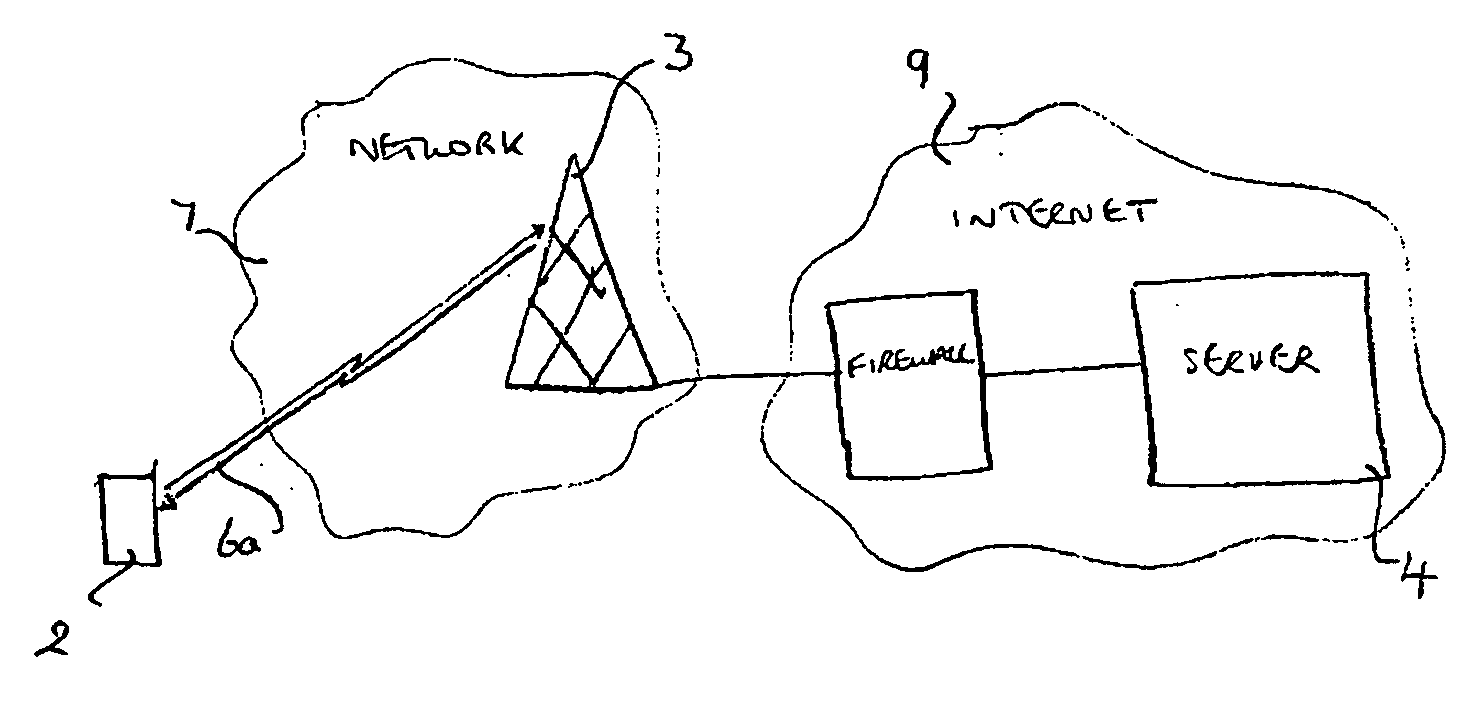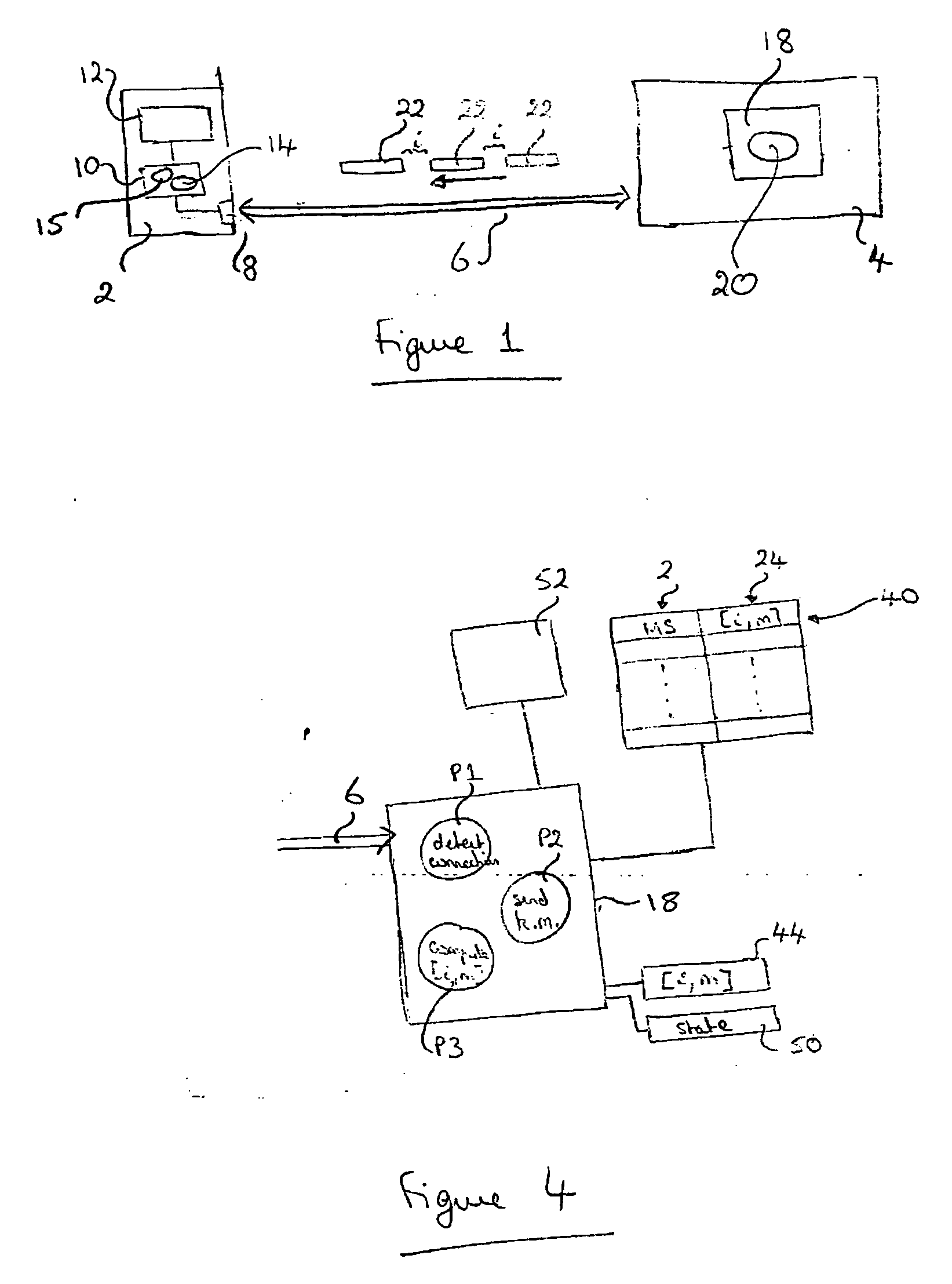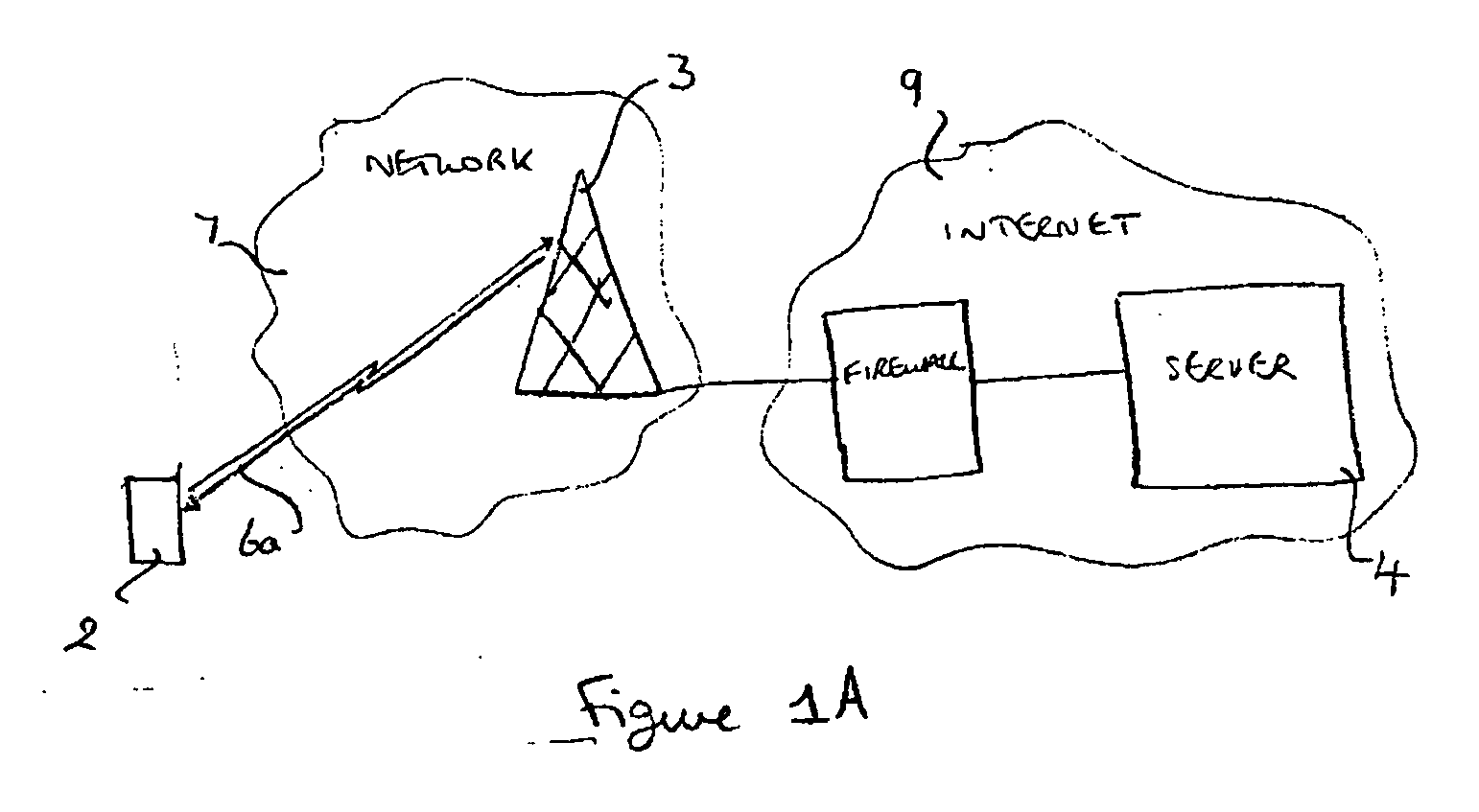Managing connections in a wireless communications network
a wireless communication and network management technology, applied in wireless communication, data switching networks, wireless commuication services, etc., can solve problems such as unreliable connections with very infrequent traffic, system failure to work in the intended way, and inability to run the server on the mobile device. to avoid unnecessary breakage
- Summary
- Abstract
- Description
- Claims
- Application Information
AI Technical Summary
Benefits of technology
Problems solved by technology
Method used
Image
Examples
first embodiment
[0063] Reference will now be made to FIG. 2 to discuss the invention. FIG. 2 shows the exchange of traffic between the mobile station 2 and the internet server 4 over the connection 6. References to the client herein refer to the client application software 14 (which may, as already mentioned, not be a true client but could be more of the nature of an element that can be asynchronously invoked from the application concept point of view). The processor 10 also implements a connection management program 15 which is responsible for executing the actions described in the following.
(a) When the client goes on-line, that is connects to the server, it transmits a keepalive period i (seconds) to the server. That period is either the last used period or some default, in case the client has not been connected to the server before.
(b) Unless there is “naturally” occurring traffic—that is, traffic related to the application specific protocol used between the client and the server—the server ...
second embodiment
[0066] Reference will now be made to FIG. 3 to describe the present invention. In the embodiment of FIG. 3, the internet server 4 determines the parameters for dispatching and monitoring keepalive messages. In this embodiment, the server 4 is referred to as the internet end and the mobile station 2 is referred to as the mobile end.
[0067] A tuple is used to represent the settings of a keepalive [i,m], where i is the interval in seconds between regular keepalive messages 22 sent from the internet end 4 to the mobile end 2, and m is the maximum latency. If a tuple (i,m) is agreed between the two endpoints, then it means that the internet end has promised to send a keepalive message at every i seconds, and the mobile end should be able to read such a keepalive message at most i+m seconds after the previously received keepalive message (or natural traffic (payload)). In this embodiment a tuple 24 is sent with each keepalive message 22, and is established by a connectivity management func...
PUM
 Login to View More
Login to View More Abstract
Description
Claims
Application Information
 Login to View More
Login to View More - R&D
- Intellectual Property
- Life Sciences
- Materials
- Tech Scout
- Unparalleled Data Quality
- Higher Quality Content
- 60% Fewer Hallucinations
Browse by: Latest US Patents, China's latest patents, Technical Efficacy Thesaurus, Application Domain, Technology Topic, Popular Technical Reports.
© 2025 PatSnap. All rights reserved.Legal|Privacy policy|Modern Slavery Act Transparency Statement|Sitemap|About US| Contact US: help@patsnap.com



